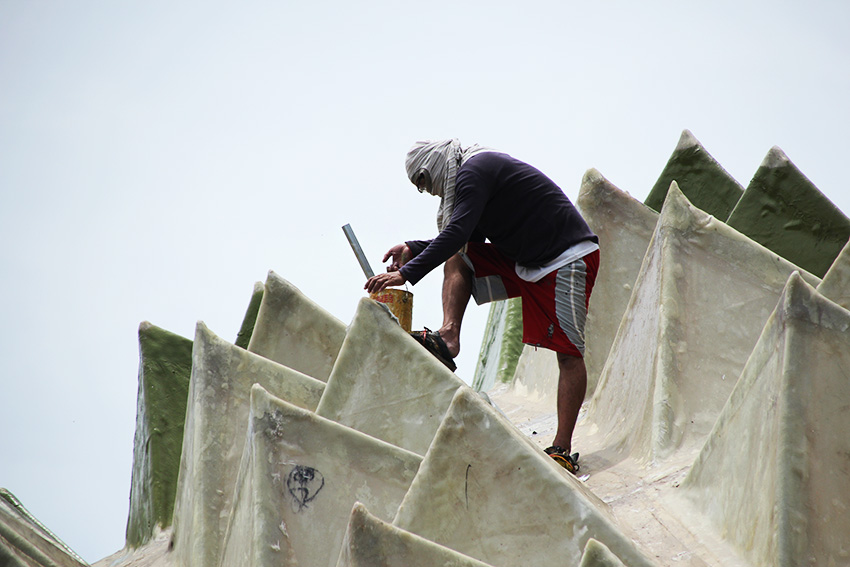
Workers paint the exterior of the Durian Dome at the People’s Park as part its renovation in time for the Kadayawan Festival. (Paulo C. Rizal/davaotoday.com)
Davao City’s Kadayawan Festival is one of the most awaited festivals not just in Davao region but also throughout the country. Even foreigners await Kadayawan Festival.
Derived from Dabawenyo word “madayaw”, the festival can be equated with beauty, bounty or goodness.
It showcases the beautiful culture and agriculture of the indigenous tribes in Davao. Aside from the festivities: the annual Indak-Indak sa Kadalanan, fluvial parade and Hiyas ng Kadayawan pageant, it is also a feast of delicious and affordable fruits the city has been renowned of — from zesty pumelo (Citrus maxima), sweet mangosteen (Garcinia mangostana) to creamy durian (Durio).
Even as a kid I always look forward every August to have a chance to visit the city with my Nanay and Tatay for Kadayawan. One of the fondest childhood memories that I have with Kadayawan is when my parents visit garden exhibits and feasting with fruits. Until now, our family is a big fan of garden shows in Kadayawan.
This week I had the chance to visit one of the fruit stalls in Davao City to check for goodies. It is surprising, however, that durian is pegged at around P150/kilo, and seldom you can find mangosteen or rambutan. There’s very few choices of fruits this year. Surprising and frustrating as well.
I tried to look for plausible reasons for this, which I am going to share with you. For me there are two possible reasons that I can think of: post-El Niño effects and the continuing land and crop conversion.
Crops during last year’s El Niño might have suffered from injuries which affected its productive buds and have not yet recovered fully. The 2016 El Niño was indeed one of the strongest drought for the past 65 years as experts say, moreover it was amplified by climate change. I hope that it is only El Niño that affected the depleting fruits available during this year’s Kadayawan as it will only take a few cropping so the trees will recover fully.
The other one is a more serious problem. Davao and its nearby provinces that supply fruits during Kadayawan were not exempted from the national scheme of land and crop conversion. For the past decade, we witnessed tremendous conversion of farmlands to subdivisions, development projects. Diverse fruit orchards were converted to big-agribusiness plantations of banana, rubber and oil-palm.
As our agriculture program focuses more on “cash crops” the local food crops will become marginalized. Seldom we can find native and nutritious fruits like lomboy, bugnay, tisa, among others, and we are starting to experience price surge on our favorite Davao fruits like durian and mangosteen.
I am not against development, but I do not agree that development will translate to P150/kg price of Durian and P300/kg price of mangosteen. Land conversion and big-business plantation is not development, in fact it is a sign of a chronic problem and backwardness in food and agriculture.
The highest form to celebrate Kadayawan is in solidarity to all the Lumad in Davao that relentlessly stand for the bounty of nature and dauntless in defending their lands from aggression projects. (davaotoday.com)
durian, kadayawan, leo xl fuentes, lumad





